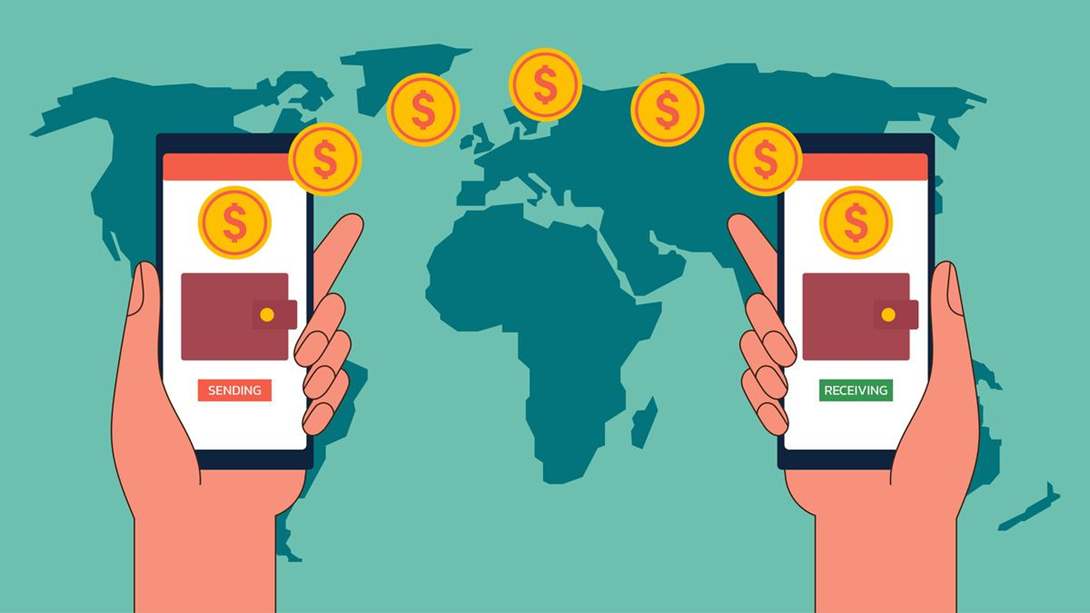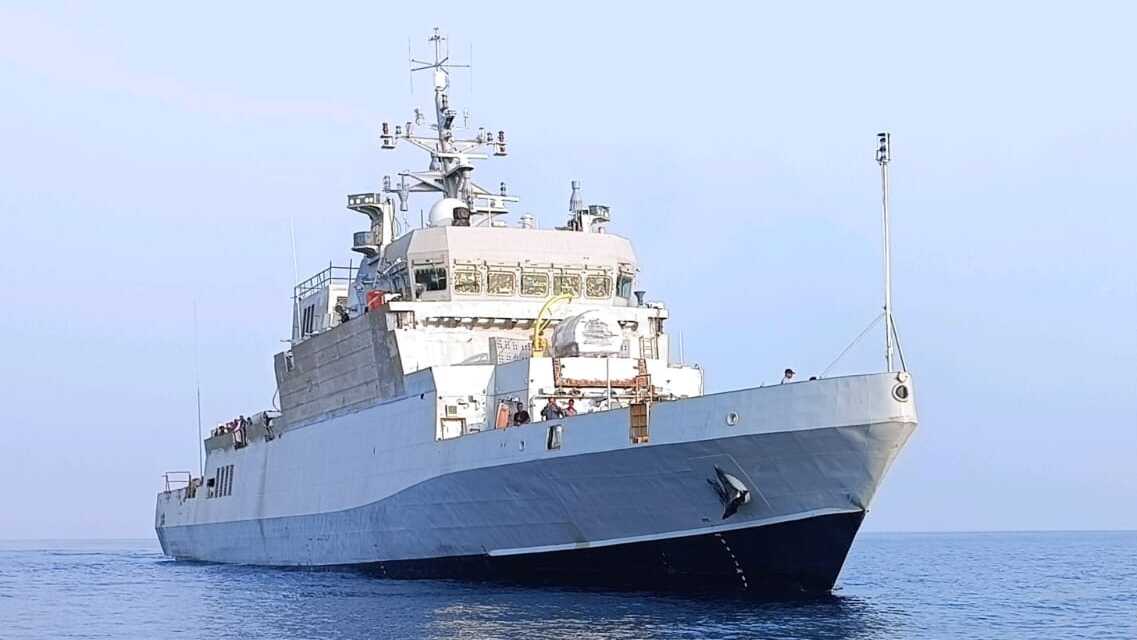- Courses
- GS Full Course 1 Year
- GS Full Course 2 Year
- GS Full Course 3 Year
- GS Full Course Till Selection
- Online Program
- GS Recorded Course
- NCERT (Recorded 500+ Hours)
- Polity Recorded Course
- Geography Recorded Course
- Economy Recorded Course
- AMAC Recorded Course
- Modern India, Post Independence & World History
- Environment Recoded Course
- Governance Recoded Course
- Science & Tech. Recoded Course
- International Relations and Internal Security Recorded Course
- Disaster Management Module Course
- Ethics Recoded Course
- Essay Recoded Course
- Current Affairs Recoded Course
- CSAT
- 5 LAYERED ARJUNA Mentorship
- Public Administration Optional
- ABOUT US
- OUR TOPPERS
- TEST SERIES
- FREE STUDY MATERIAL
- VIDEOS
- CONTACT US
Tackling the frictions in cross-border payments
Tackling the frictions in cross-border payments

The Financial Stability Board (FSB) has highlighted the urgent need to address problems in cross-border payments (CBPs) systems. As the global market for cross-border payments is expected to nearly double by 2032, improving these systems is becoming increasingly important.
What are Cross-Border Payments?
- About
- Cross-border payments (CBPs) involve transactions where the payer and the recipient are in different countries. These payments are essential for international trade, investment, and personal transfers.
- Types
- Wholesale Cross-Border Payments: These are large transactions between financial institutions for activities such as trading in foreign exchange, equities, and commodities, as well as significant transactions by governments and large corporations.
- Retail Cross-Border Payments: These involve individuals and businesses, including person-to-person (P2P), person-to-business (P2B), and business-to-business (B2B) transactions. A common example is remittances, where people send money to family members in their home countries.
- Significance
- The global CBP market was valued at USD 181.9 trillion in 2022 and is expected to reach USD 356.5 trillion by 2032, growing at an annual rate of 7.3%. This growth reflects the increasing global economic activities and financial transactions.
- Efficient cross-border payments are crucial due to the globalisation of supply chains, international trade, and e-commerce.
Working Procedure
-
Traditional Models of CBPs
- Direct Bank Transfers: Banks have accounts with foreign banks to facilitate international transfers. Instead of physically moving money, funds are credited and debited between accounts.
- Correspondent Banking: When two banks do not have a direct relationship, they use a correspondent bank that holds accounts with both banks to facilitate transactions. This adds layers to the transaction process and is becoming less common due to high costs and regulatory challenges.
- Single System Model: Uses one payment service provider but faces issues with interoperability.
- Interlinking Payment Infrastructures: Connects national systems to enable seamless transactions but faces technical and regulatory challenges.
- Peer-to-Peer Systems: Uses technologies like distributed ledgers for direct payments, which may solve some inefficiencies of traditional methods.
-
New-Age Models
- Linking Fast Payment Systems (FPS): Initiatives like the PayNow-PromptPay linkage between Singapore and Thailand and the UPI-PayNow linkage between India and Singapore enable real-time, cross-border fund transfers.
- Central Bank Digital Currencies (CBDCs): CBDCs are being explored to potentially simplify international transactions.
- Distributed Ledger Technology (DLT): DLT projects, often combined with CBDCs, aim to improve transaction speed, security, and cost-effectiveness. DLT allows simultaneous access, validation, and updating of records across a network, which enhances data reliability and reduces the need for audits.
Challenges Regarding Cross-Border Payment Systems
-
Legal and Regulatory Compliance
- Payments must comply with diverse domestic laws, including anti-money laundering (AML) and customer due diligence. Inconsistent AML and counter-terrorist financing (CFT) frameworks create friction.
- The FSB 2023 report points out issues with inconsistent recordkeeping in wire transfers, affecting customer identification and sanctions screening.
-
High Costs
- Cross-border transactions often involve multiple fees, such as charges from intermediary banks and currency conversion costs.
- Banks must hold capital in different currencies, which increases costs and resource use.
- Hidden fees and unclear cost breakdowns make it hard for users to understand the true cost of transactions.
-
Low Speed
- Transactions can take several days due to multiple intermediaries and time zone differences. Payment systems often operate during local business hours, causing delays.
-
Limited Access
- Not all regions have access to efficient cross-border payment systems, particularly underserved or less developed areas.
- Limited banking services or outdated financial technologies can hinder cross-border payments.
-
Fragmented Data Formats
- Variations in data formats between countries and systems can cause delays and errors in processing payments.
-
Technology Platforms
- Many systems use outdated technology that is not suited for real-time processing or integration with modern systems.
-
Long Transaction Chains
- The involvement of multiple correspondent banks can lead to increased costs, delays, and data corruption.
-
Weak Competition
- High barriers to entry can limit competition and innovation, leading to higher prices for end users.
Cross-Border Payments in India
- Overview
- India is a major player in global remittances, handling around USD 80 billion in inbound remittances and USD 19 billion outbound.
-
Evolution in Cross-Border Remittances
- Pre-Technology Era: Non-Resident Indians (NRIs) used demand drafts sent via courier for encashment.
- Online Remittances: The National Electronic Fund Transfer (NEFT) system, launched in the mid-2000s, allowed direct and secure transfers to Indian accounts. NEFT is managed by the Reserve Bank of India (RBI).
- IMPS Integration: The Immediate Payment Service (IMPS) by NPCI enables credits to be completed in under 3 minutes.
- UPI for Foreign Inward Remittance: The Unified Payments Interface (UPI) has further streamlined the remittance process.
- Regulatory Changes: The RBI introduced new regulations for Payment Aggregators of Cross-Border Transactions (PA-CB Regulation) to streamline and regulate cross-border payments.
What is Being Done Internationally to Improve Cross-Border Payments?
-
G20
- The G20 has prioritized enhancing cross-border payments to improve speed, reduce costs, increase transparency, and promote inclusivity. The 2020 Roadmap aims to address these issues globally by 2027 with 11 targets related to transaction speed, cost, access, and transparency.
-
SWIFT GPI
- The Society for Worldwide Interbank Financial Telecommunication (SWIFT) launched the Global Payments Innovation (GPI) to enhance cross-border payment speed and transparency, allowing real-time tracking and ensuring transfers within a day.
-
Project Nexus
- Conceptualized by the Bank for International Settlements (BIS), Project Nexus aims to connect multiple domestic fast payment systems globally, creating a standardized platform for near-instantaneous cross-border payments. Founding members include India, Malaysia, the Philippines, Singapore, and Thailand.
-
Global Payment Service Providers
- Visa and Mastercard are working on innovations to improve cross-border payments. Visa’s B2B Connect uses API and distributed ledger technology (DLT) for same-day or next-day settlement of large transactions between banks.
Financial Stability Board (FSB)
- The FSB monitors and makes recommendations about the global financial system. Established in 2009 at the G20 Pittsburgh Summit, it succeeded the Financial Stability Forum (FSF). It includes G20 countries, Spain, the European Commission, and FSF members. India actively participates with three seats in its Plenary.
Way Forward
-
Balancing Privacy with Financial Integrity
- Develop legal frameworks that balance user privacy with AML and CFT requirements. Ensure consistent regulation across jurisdictions to prevent inefficiencies.
-
Explore KYC Utilities
- Develop Know Your Customer (KYC) utilities to standardize identity verification and improve efficiency.
-
Dispute Resolution Framework
- Create a centralized system for managing grievances and disputes between Payment Service Providers (PSPs).
-
Central Bank Collaboration
- Encourage central banks to work together on interoperable payment systems and explore the potential of CBDCs for cross-border transactions.
-
Foster Competition
- Promote competition among payment service providers to reduce costs and improve service quality by involving the private sector.
Conclusion
Improving cross-border payments is crucial due to the growing global market and the need for efficient international transactions. While there are significant challenges such as legal compliance, high costs, and slow speeds, advances in technology and international initiatives are paving the way for more effective solutions. Balancing privacy, enhancing regulatory consistency, and fostering competition will be key to overcoming these challenges and making cross-border payments more efficient and inclusive in the future.
Must Check: Best IAS Coaching In Delhi
UPSC Prelims Result 2024 Out: Expected Cut Off & Other Details, UPSC Prelims 2024 Answer with Explanation, Daily Prelims Quiz, Daily Current Affairs, MONTHLY CURRENT AFFAIRS TOTAL (CAT) MAGAZINE, Best IAS Coaching Institute in Karol Bagh, Best IAS Coaching Institute in Delhi, Daily Mains Question Answer Practice, ENSURE IAS UPSC Toppers, UPSC Toppers Marksheet, Previous Year Interview Questions, UPSC Syllabus




